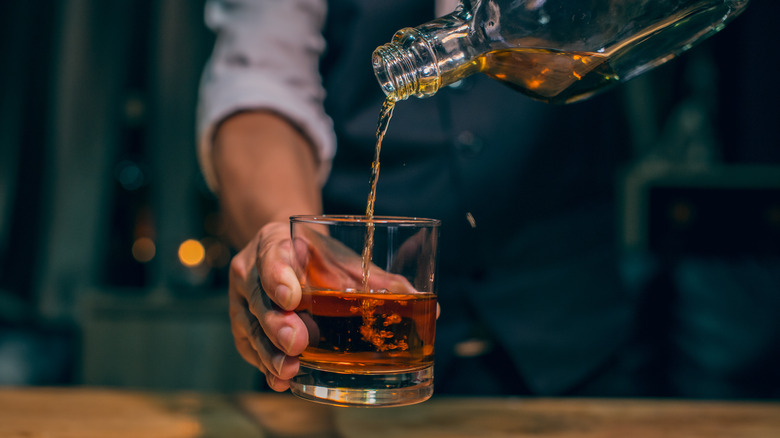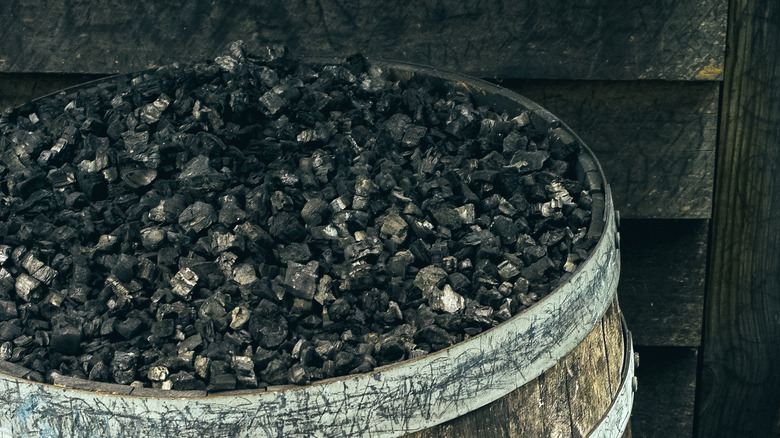The Step That Makes Kentucky Bourbon And Tennessee Whiskey Different
CORRECTION 2/21/23: A previous version of this article stated Kentucky bourbon could be made outside of Kentucky. While bourbon can be produced anywhere in the U.S., Kentucky bourbon (also called Kentucky straight whiskey) can only be produced in Kentucky.
Both Kentucky bourbon and Tennessee whiskey are whiskeys that have been made in the United States, explains Barrell Craft Spirits. And while both bourbon and whiskey are made from a mash derived primarily from corn, Tennessee whiskey goes through an extra step before it is placed into barrels to age (via Scientific American).
Whether it is a quick procedure or a multi-day event as practiced by Jack Daniel's, this extra step is characteristic of Tennessee whiskey. And unlike the rest of the whiskey-making process, it isn't prescribed or mandated. Cornell Law School explains that the U.S. has published a set of clear guidelines that outline how, exactly, bourbon should be made. If distillers want to label an alcohol "bourbon," they must follow a strict set of rules that include a minimum of two years aging in white oak barrels, notes Bourbon Country, and at the time of bottling, nothing except water can be added that could change the flavor or color of the alcohol.
The differences you notice between Kentucky bourbon and Tennessee whiskey might be due to a specific filtration process.
Filtration with a proven method
Tennessee whiskey is filtered through maple charcoal, a step that has become known as the Lincoln County Process. Jack Daniel's master distiller Chris Fletcher told Distiller that charcoal has been used to purify and filter ingredients for thousands of years. Also known as charcoal mellowing, this particular step helps give a smooth flavor and texture to labels like George Dickel and Jack Daniel's, explains Barrell Craft Spirits. Depending on how much filtration takes place, heavier compounds are removed from the drink, and a softer taste and mouthfeel is left in their place.
According to research reported by Scientific American, using charcoal as a filter can take away nearly a third of branched alcohols and almost half of ethyl esters from the whiskey. Esters mainly appear during fermentation, explains Douglas Laing, and the longer ethyl ester — also known as ethyl acetate — is left to mature, the more likely higher concentrations will yield unpleasant, chemical-like aromas. Exposing the alcohol to the maple charcoal helps reduce that effect, and a smoother drink can be enjoyed.
As for whether you'd prefer to pour Kentucky bourbon or Tennessee whiskey, we'll leave the taste-testing up to you.

